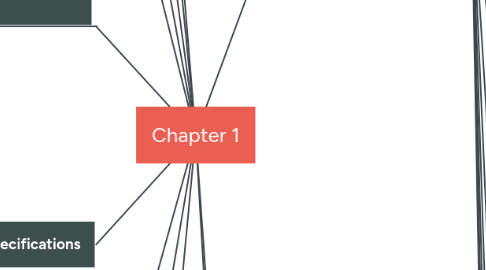
1. Product definition
1.1. Any good or service developed by man, which is offered to satisfy the needs or desires of consumers, generating an economic income.
2. Types of demand
2.1. Constant, ascending, descending, by event, fluctuating, erratic, massive, exclusive.
3. Exportable product and production
3.1. Exportable product: one that has several characteristics that can make it salable in external markets.
3.2. Exportable product: Is the one that has several characteristics that can make it salable in external markets.
4. Success factors in product development
4.1. Good idea, sufficient demand, good development, capable, integrated and motivated team, sufficient resources, technology, knowledge of the market.
5. Benefits of product development for the company
5.1. Take advantage of new regulations, increase profits, market share, competitive capacity, adapt to changes in tastes and customs, replace products, demographic changes, integrate technological advances, satisfaction of needs, promotion of the company's image.
6. Integration of new products to the product mix
6.1. Internal development of new products. External development of new products. Combined development of new products. Purchase of new products. Update of products, internal or external.
7. Specifications
7.1. It is the ordered set of attributes or objective and subjective characteristics that a certain product has or must have.
8. Classification
8.1. According to the Boston Consulting Group. It interrelates the growth in sales with the market share
8.2. By its nature.
8.2.1. Tangible-goods: free goods and economic goods. Intangibles-services and know how: * Services: Pure (does not require the assignment of goods to the user). Impure (assignment of goods during the service) * Know how: brand use, religious, social and political marketing.
8.3. By its destination or use
8.3.1. Consumer products: They are extinguished when they are applied to the satisfaction of the needs or wishes of the final consumers. Immediate, Semi durable, Long lasting. Industrial products: They are acquired to produce other products: Raw material, materials, machinery, technology, name and brand
8.4. For the grade of need
8.4.1. *Necessary for human life *Useful or convenient *Sumptuary: satisfying a psychological need
8.5. For the purchase action
8.5.1. Of impulse, of emergency, of comparison, of specialty, of convenience, not sought, of repurchase.
8.6. For its production
8.6.1. Naturals, semi-manufactures, artesanales, craft, manufactured.
8.7. For its durability
8.7.1. Perishable, non-perishable.
8.8. For its technology
8.8.1. Non-technology: fruit, basic technology: clothes, high technology: computers.
8.9. For the care required
8.9.1. Problematic handling or they don't require special care.
8.10. For the benefit expectations
8.10.1. Real product or psychological product
8.11. By its danger
8.11.1. Dangerous products Delicate handling products
8.12. By the targets location
8.12.1. Specific product, export product, globalized product.
8.13. By its industrial property
8.13.1. Originals, copies, fakes.
8.14. By the degree of adaptation to the characteristics of the consumer
8.14.1. Standard, personalized.

